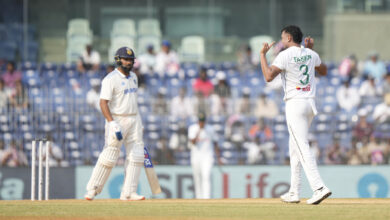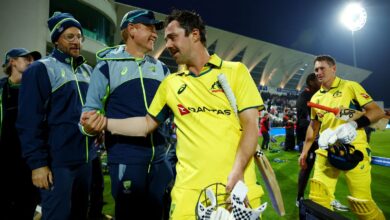Out of 5961 dope tests in 2021 and 2022, only 114 on Indian cricketers, data reveals

In its damning report on India’s anti-doping programme published on Tuesday, the World Anti-Doping Agency ‘uncovered evidence’ of inadequate drug tests carried out on the country’s athletes.This fact is reflected in the figures of the dope tests conducted on India’s cricketers in 2021 and 2022, information obtained The Indian Express under the Right to Information (RTI) Act, 2005.Cricket has been under the government-run anti-doping agency’s ambit in August 2019. While ending years of defiance from the cricket board, government officials back then vowed ‘all cricketers would be tested NADA’ and that the ‘BCCI was no different from other’ federations.
But the RTI data points otherwise. Sample this:
* According to the data provided the National Anti-Doping Agency (NADA), a total of 5,961 tests were conducted in 2021 and 2022. Only a fraction of those – 114 – were on cricketers. In contrast, 1,717 tests were conducted in athletics, the most among all sports.
* Test captain Rohit Sharma was the most-tested Indian cricketer during the two years, with the dope control officers visiting him 6 times – in Mumbai, Ahmedabad, Chennai and the UAE. Seven players, including the likes of Rishabh Pant, Suryakumar Yadav and Cheteshwar Pujara, were tested just once.
* The NADA conducted 0 tests on 12 out of the 25 male players contracted with the Board of Control for Cricket in India (BCCI). The l of cricketers not tested include former India captain Virat Kohli, current limited-overs skipper Hardik Pandya, fast bowlers Mohammad Shami, Mohammed Siraj, Umesh Yadav, Shardul Thakur and Arshdeep Singh; batsmen Shreyas Iyer, Deepak Hooda, wicket-keeper batsmen Sanju Samson and Srikar Bharat, and all-rounder Washington Sundar
* Every player in the women’s national team during this period was subject to the process at least once, with Harmanpreet Kaur and Smriti Mandhana tested the maximum number of times – 3 each.
This data does not imply any wrongdoing on the part of the players. However, it further underlines the assertion of the world anti-doping body that NADA was not doing enough to catch potential offenders.
It also points to a trend that while the country’s Olympic athletes have been under the constant scrutiny of the NADA, who have in recent months caught some big fish in the dope net, some of the country’s star male cricketers have not been asked to provide samples for testing.
For instance, between January 2021 and December 2022, India’s anti-doping sleuths knocked on the doors of Olympic silver medall Ravi Dahiya 18 times. They landed unannounced at the wrestler’s training base in New Delhi and Sonepat, Haryana, to collect his urine and blood samples, which were then analysed for the presence of banned drugs, if any.
The NADA conducted 0 tests on 12 out of the 25 male players contracted with the Board of Control for Cricket in India (BCCI). (AP)
During the same period, the dope-control officers of NADA also paid a surprise visit to another Olympic silver medall, weightlifter Mirabai Chanu, eight times, collecting her samples at home in Patiala, Gandhinagar, and abroad, in Birmingham. Dope control officers also followed the Tokyo Olympics gold medall javelin thrower Neeraj Chopra to Patiala, and to as far as Finland and the USA, testing him five times in the process.
These tests were conducted out-of-competition, which form the bedrock of the anti-doping programme as a player can be tested during a pre-declared time window on any day after the athletes share their whereabouts with the agency.
India’s out-of-competition sample collection figures for cricketers are fewer than other major cricket-playing nations like England and Australia. According to WADA statics, in 2021 the UK agency conducted 96 out-of-competition tests on its cricketers while Australia performed 69 tests. In India, that number stood at 12.
This was one of the points that irked the cricketers in the past, who were reluctant to share their whereabouts citing privacy and security concerns.
Why cricketers need to be tested more
Increasing workload, round-the-year travel and a choc-a-bloc calendar give international cricketers very little time for recovery between games. Highly-competitive international cricket, three formats and a longer IPL window mean cricketers have to be fitter than ever before. Hence it is imperative to have a robust anti-doping mechanism, in which players can be tested anytime and anywhere. This is one of the essentials to ensure a level playing field and a clean sport environment.






